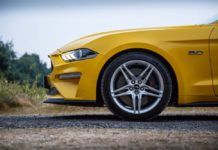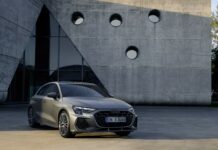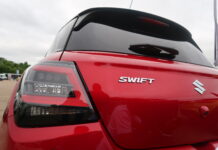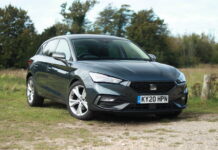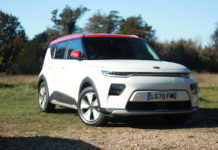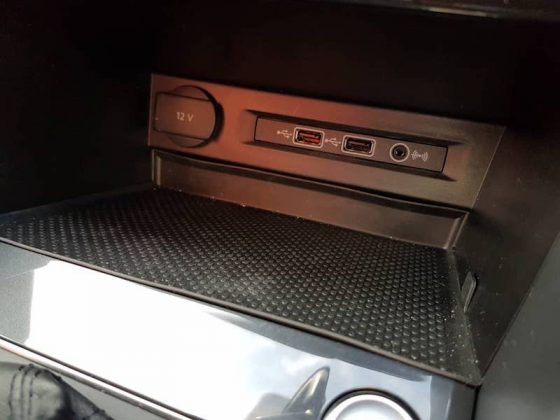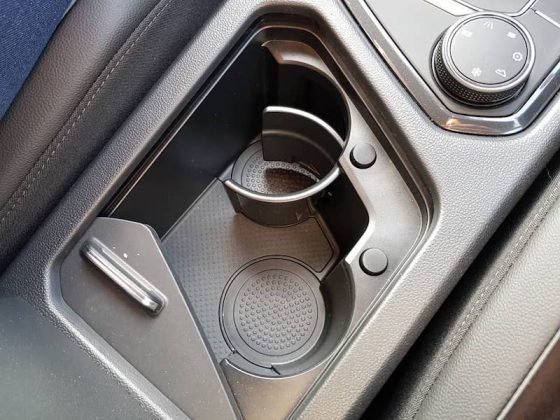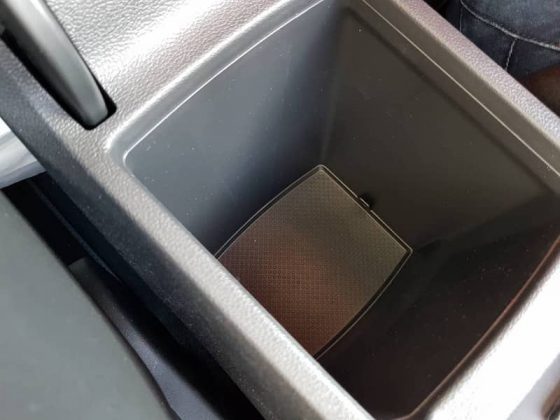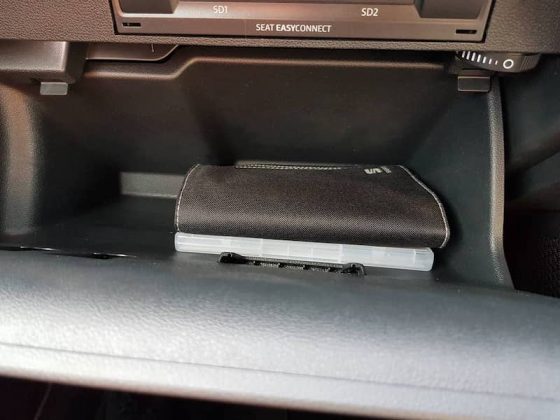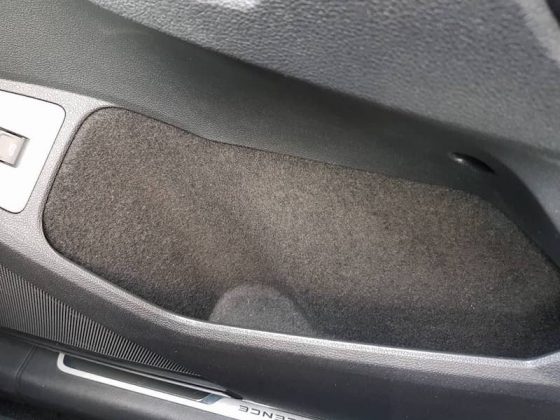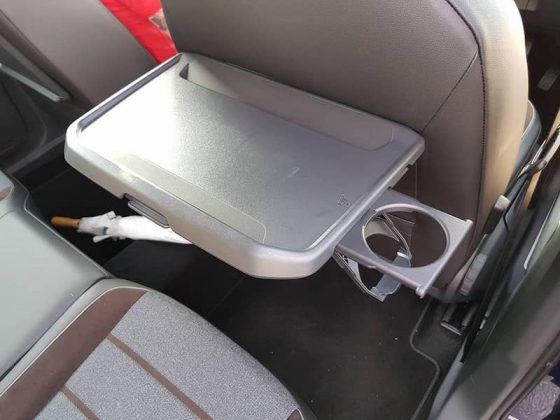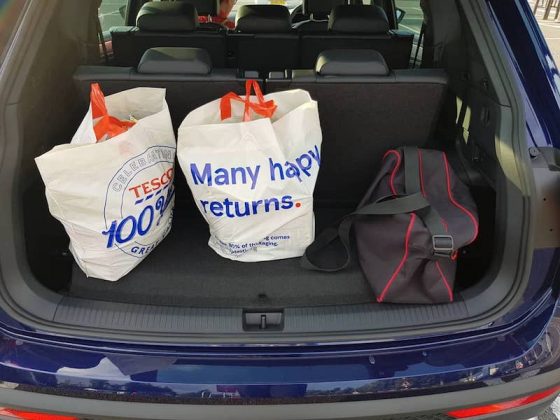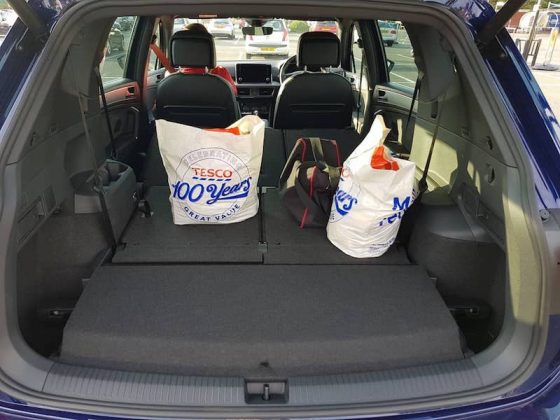Seven seaters. Historically they haven’t been the coolest of cars, but cars such as the Peugeot 5008 and the Skoda Kodiaq have shown that you can have space for seven, whilst at still having some style to go with it. There’s now a new kid on the block – it’s called the SEAT Tarraco, the latest and largest SUV to come from the Spanish brand.
***Just a bit of housekeeping; almost all of my photos from this review were corrupted, so I’m afraid I have a limited amount of pictures***
Setting a new standard
I want to start, if I may, with the styling. SEAT states that the new Tarraco signifies the new direction in the brand’s design language, and to me, that’s a bit of a worry. Now, I’m not saying it’s ugly, or so offensive to my pupils that I want to stab my eyes out, because it’s actually pretty agreeable.
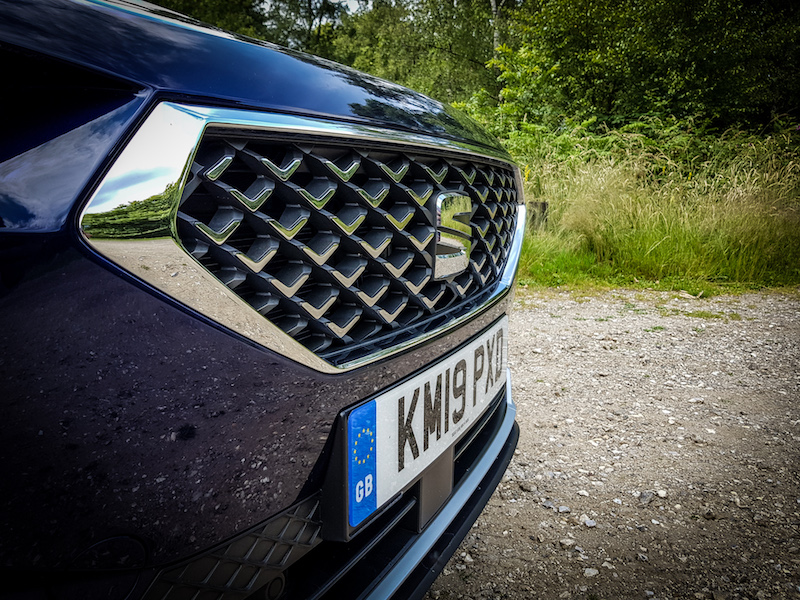
However, I don’t think it’s quite as striking or as stylish as the rest of the SEAT range. I think the front grille is my biggest gripe, it just doesn’t look ‘SEAT’ to me. Some of you probably think I’m talking rubbish, but this is all subjective of course. However, I really dig the 19″ alloys that come as standard, and this Atlantic Blue metallic paint which has a beautiful glisten – that also comes as standard as well.
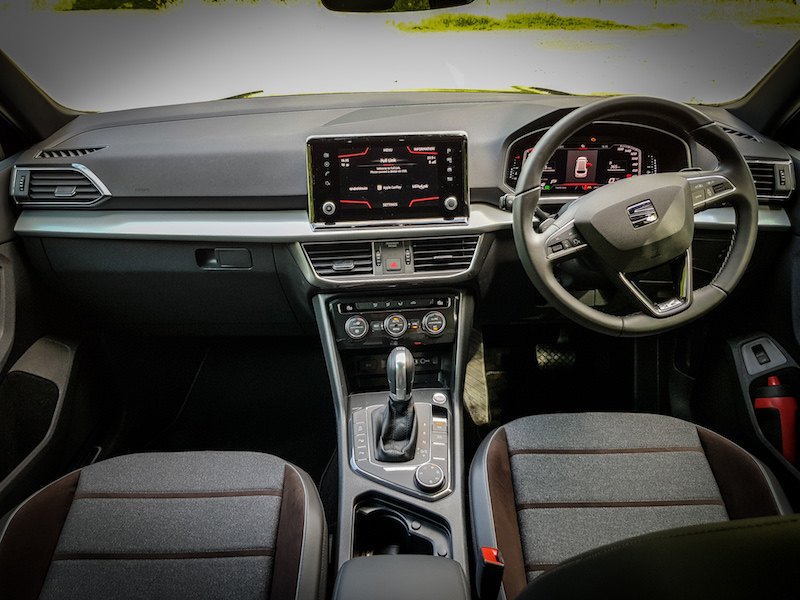
The inside is a pleasant place to be, but it’s a bit sober. It’s well-finished and tidy, but it doesn’t feel like as much of an occasion as slipping inside a Peugeot 5008. Mind you, this interior is more functional and offers better ergonomics, so it’s horses for courses I suppose. The model tested here is the XCELLENCE trim level, therefore, front sports with alcantara come as standard, but brown seems like an odd choice of colour if you ask me.
Is it spacious?
Space in the front, is pretty good – the doorbins are large enough to swallow a 1.5 litre bottle of water with space left over, and you’ve also got two cupholders in the middle. At first it looks as if there is nothing to support your drink, but with the press of a button you get a clamp that comes out in a fashion that looks as if it came from the Q division in James Bond movies.
There is a decent amount of storage underneath the front centre armrest which is adjustable, there’s a cubbyhole at the bottom of the centre console, but sadly there’s no wireless phone charging pad. There’s also a sunglasses holder, as well as glovebox that offers an ample amount of space. Getting a good driving position is easy, as the steering wheel offers a good amount of adjustment thanks rake and reach adjustment, and the driver’s seat offers a decent amount of adjustment as well.
Space in the middle is good – even with the driver’s seat set for my 6’2″ frame I had a good amount of knee room and legroom, although I was expecting a bit more headroom. Don’t get me wrong, I had space left over, and it was far from tight, but if I’m going to be picky, I would have liked a bit more. The middle seats can slide forwards or backwards, and they also recline for better comfort.
I tell you one feature I like for the middle row, look at this. You get a little table that folds out from the back of the front seats and it’s even got a cupholder. I’m getting to excited about this, aren’t I? Anyway, moving on.
Stepping in to rear seats will be quite comical – and uncomfortable – if you happen to be of my height, but let’s be honest, these are best reserved for children. Having said that, I reckon smaller adults may be able to squeeze themselves in, but the majority of adults will want to avoid the 6th and 7th seat.
What about the boot?
I have the XCELLENCE model, so as standard I get a hands free automatic tailgate – handy for when you’ve got your hands full with shopping bags. With the rear seats up you have a capacity of 215 litres, which is less than what you got from your average city car, but fold down the rear seats and you’ll get a much more impressive – and usable – 700 litres. That’s not quite as large as the Kodiaq or the 5008, but it’s far from pokey.
However, for those of you seeking even more space, you can fold down the middle seats to enjoy a maximum of 1,775 litres but the middle seats don’t quite fold flat, which may annoy some potential buyers. For those of you wondering, there’s no spare wheel as standard, but you do of course get a tyre repair kit.
Watch: SEAT Tarraco Interior Review
How does it actually drive?
If you go for this engine, then you’ll find the Tarraco is quite a pokey thing, despite this model weighing over 1,800kg. Underneath the bonnet you have a 2.0 litre turbocharged petrol which offers 190hp with 320Nm of torque – that’s 236 lb ft if you prefer the imperial measurement. This power can only be mated to SEAT’s 4Drive four wheel drive system via a 7-speed DSG. 62mph can be hit in a respectable 8 seconds, and the top speed is 131mph.
Before I speak about the driving sensation in more detail, let me fill you in when it comes to the other engines you can have. As well as this 2.0 litre petrol, buyers also have the choice of a 150hp 1.5 litre unit, or a 2.0 litre diesel which offers either 150 or 190hp.
The 1.5 litre petrol is only available with front wheel drive and a 6-speed manual gearbox, whereas the 150hp diesel has the choice of two wheel drive and 6-speed manual, or 4Drive and 7-speed DSG. The 190hp diesel unit, much like this petrol, is mated exclusively to 4Drive with the 7-speed DSG.
Heading back to this engine, it makes effortless progress; there’s minimal turbo lag and it’s eager to get a move on, especially when you have in Sport mode. The DSG works well; it’s seamless, slick, and I think it matches the character of the car quite well. As well as the Sport mode, you’ve also got Eco, Normal, Individual, Off-Road, and Snow.
No adaptive dampers, but it’s still comfortable
For those of you wondering, the Tarraco doesn’t have adaptive dampers – which is a bit grating as other markets get it – so the driving modes have no bearing on the suspension. Speaking of which, let’s talk about the ride. It’s pretty good for the most part, but because I’ve got 19″ alloys, it does have a firm edge to it. However, the damping is good enough to protect from the majority of harsh bumps.
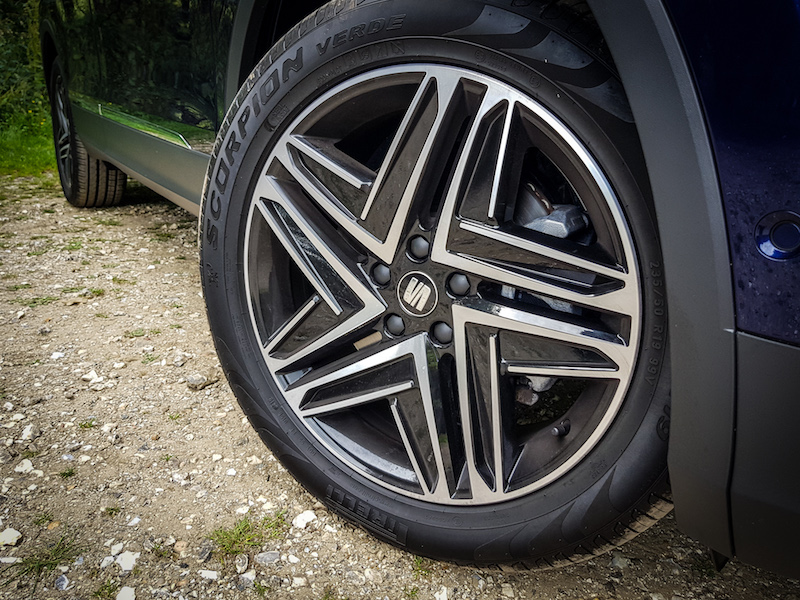
The seats are comfortable, though, and they also offer a good level of support. Some may not like the brown touches of alcantara, but I actually don’t mind them to be honest – I would prefer black, though. If you want a more agreeable ride, then it may be worth looking at a lower spec model as they come with smaller alloys.
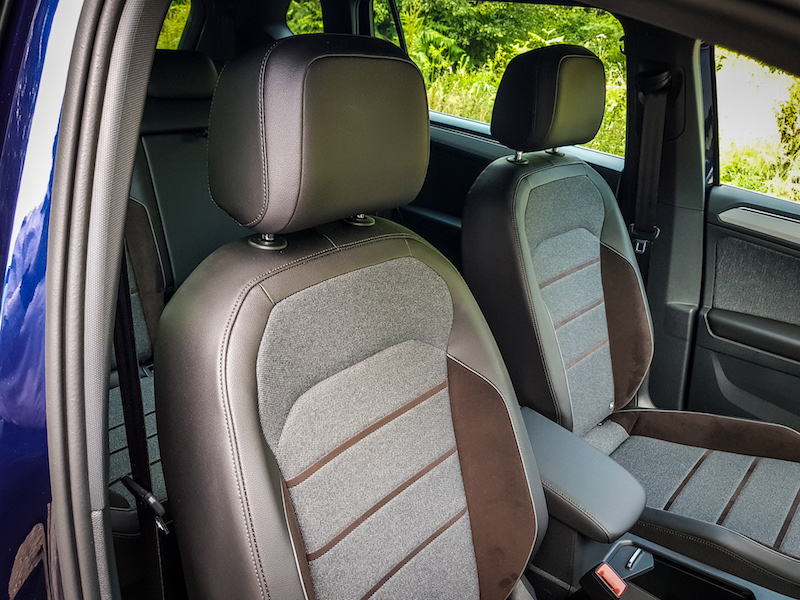
If you want a more comfortable seven seater than I would urge you to take a look at the Peugeot 5008 or the Honda CR-V, but one area where the Tarraco beats the 5008 and CR-V at, is driving engagement. Despite its size and weight, the Tarraco is accomplished in the corners. Body roll is respectable, the steering is well-weighted in Sport mode, and you’ve also got progressive steering as well, so it’s pretty direct.
The handling gets a thumbs up for me, but what about refinement? On the whole, it’s pretty impressive. As mentioned, this car has 19″ alloys, but the tyre noise isn’t as loud as I was expecting. It is there, of course, but I doubt it will be of constant annoyance. Wind noise is well controlled, and the engine fades away in to the background when you’re cruising, meaning the cabin is a peaceful place to be. Obviously it won’t stay that way once you’ve got children asking whether you’re there or not…
How much is it?
The new SEAT Tarraco is available in four trim levels; SE, SE Technology, XCELLENCE and XCELLENCE LUX, with starting prices ranging from £28,550 all the way through to £32,400. The model seen here is the XCELLENCE, which starts from £30,640, but I have the 2.0 litre petrol engine which is mated to SEAT’s 4Drive system and a 7-speed DSG, therefore the car you see here is £35,060.
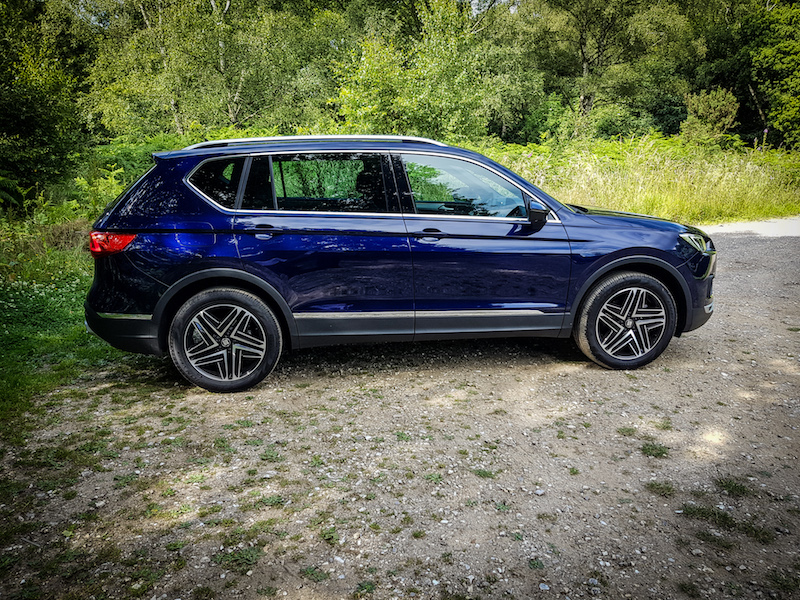
Standard features include 19″ alloys, chrome window surrounds, tinted rear windows, LED headlights, LED daytime running lights and LED rear lights, metallic paint, front sports seats trimmed with alcantara, keyless entry, park assist, front and rear parking sensors, reversing camera, Digital cockpit, 8″ touchscreen, smartphone connectivity, 3D navigation, adaptive cruise control, hill descent control, three zone climate control, and a good host of safety features.
Ask Aaron
Will there be a ‘Cupra’ branded version of this, like the Cupra Ateca?
There are plenty of rumours floating about, but nothing has been confirmed at this moment in time. Mind you, how many people would be looking for a fast 7-seater? It seems a little too niche if you ask me.
Does the boot have a safety feature if you’re still standing there while the tailgate is closing?
Good question – let’s find out. Watch from 11:59 in this video to see what happens.
What makes it better or different than the Skoda/VW equivalent?
Well it’s cheaper than the VW version, but it is more than the Skoda. However, the Skoda Kodiqa works out to be more money once you spec it to a similar level to the Tarraco tested here. After playing about with Skoda’s online configurator, I found that an SE-L model with the necessary options would cost around £3,000 more. The Kodiaq does come with a bigger boot, though.
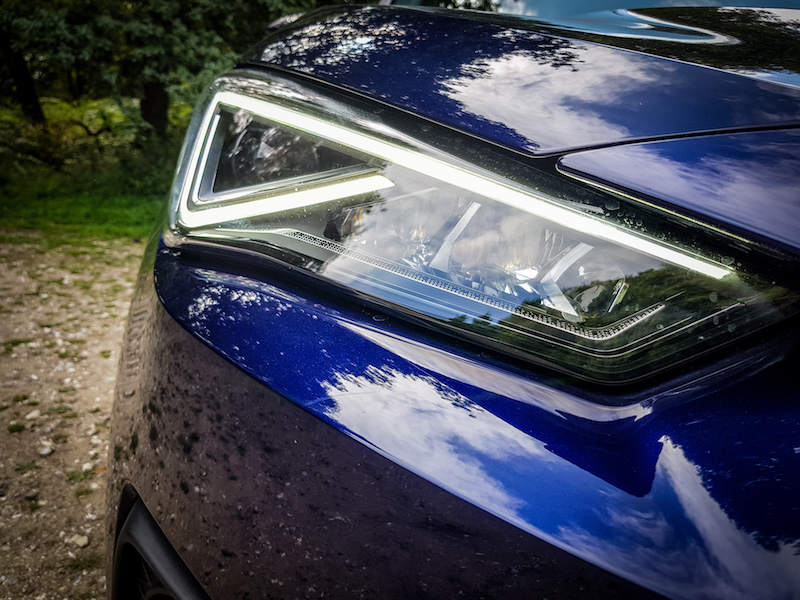
What do you think of the new SEAT infotainment system?
I think it’s fantastic, it looks great and it works well. If you want a more in-depth look at the infotainment system, hit the video in the right hand corner of your screen.
Can you demonstrate the adaptive cruise control please?
Yes I can! Watch from 13:55 in this video to see it in action.
How frugal is it?
Fuel economy will be an important area for a car like this, and it’s safe to say that this engine is not the best choice for those looking to sip away at their fuel sparingly. This 2.0 litre petrol, on a combined run is good for 31mpg, with 206g/km of CO2 emissions, which let’s face it, in 2019, isn’t fantastic. In my experience, I’ve been pushing 40mpg, but it’s worth noting that my commutes have been on faster, more scenic roads.
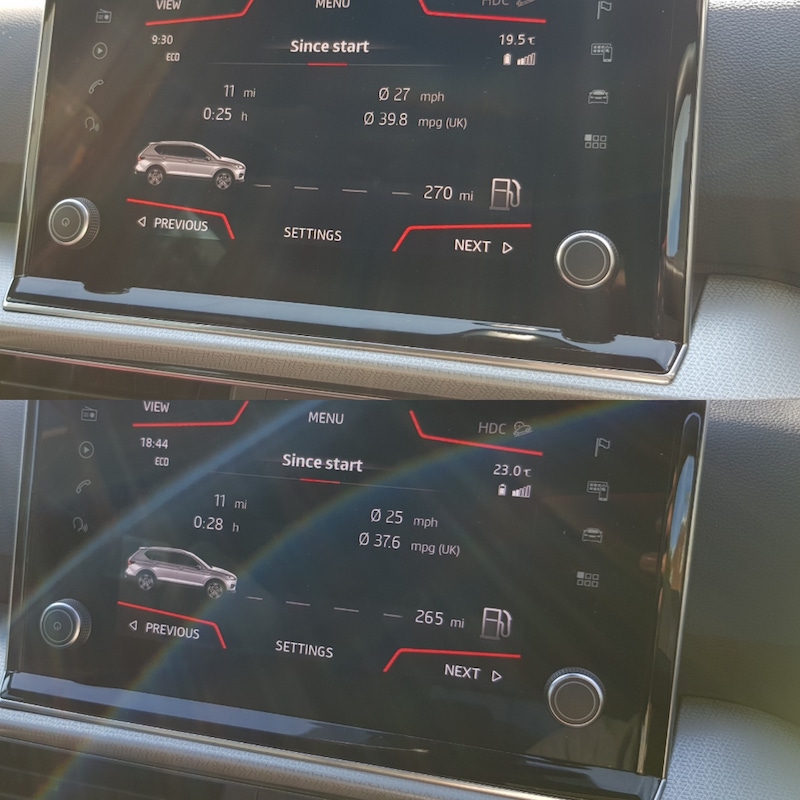
However, there’s a good chance you want to get more for your money, so in which case. you’ll want to look at the 150hp 2.0 litre diesel, as that offers 47.9mpg with 156g/km of CO2 emissions. You may not want a diesel, though, so you’ll need to look at the 1.5 litre petrol as that also offers 47.9mpg on a combined run, but the emissions are higher – 173g/km. In case you’re wondering about the 190hp 2.0 litre diesel, on a combined run that offers 39.8mpg and emits 186g/km of CO2.
In regard to VED costs, for the car you see here, you’ll be required to pay a whopping £1,280 for the first year, but the 1.5 litre petrol falls down to £855. The 2.0 litre diesel requires a payment of £530 for the less powerful engine, and £855 for the more powerful version. In case you’re wondering about BIK, for this car you’re looking 37%, so this obviously won’t be the most cost effective company car.
How safe is it?
Like fuel economy, safety is bound to be an important factor when choosing a family car. Standard safety features include seven airbags, autonomous emergency braking, lane keep assist, hill hold assist, driver tiredness warning, and emergency call. Thanks for this kit, Euro NCAP awarded the new Tarraco five stars, which is bound to give potential buyers strong peace of mind.
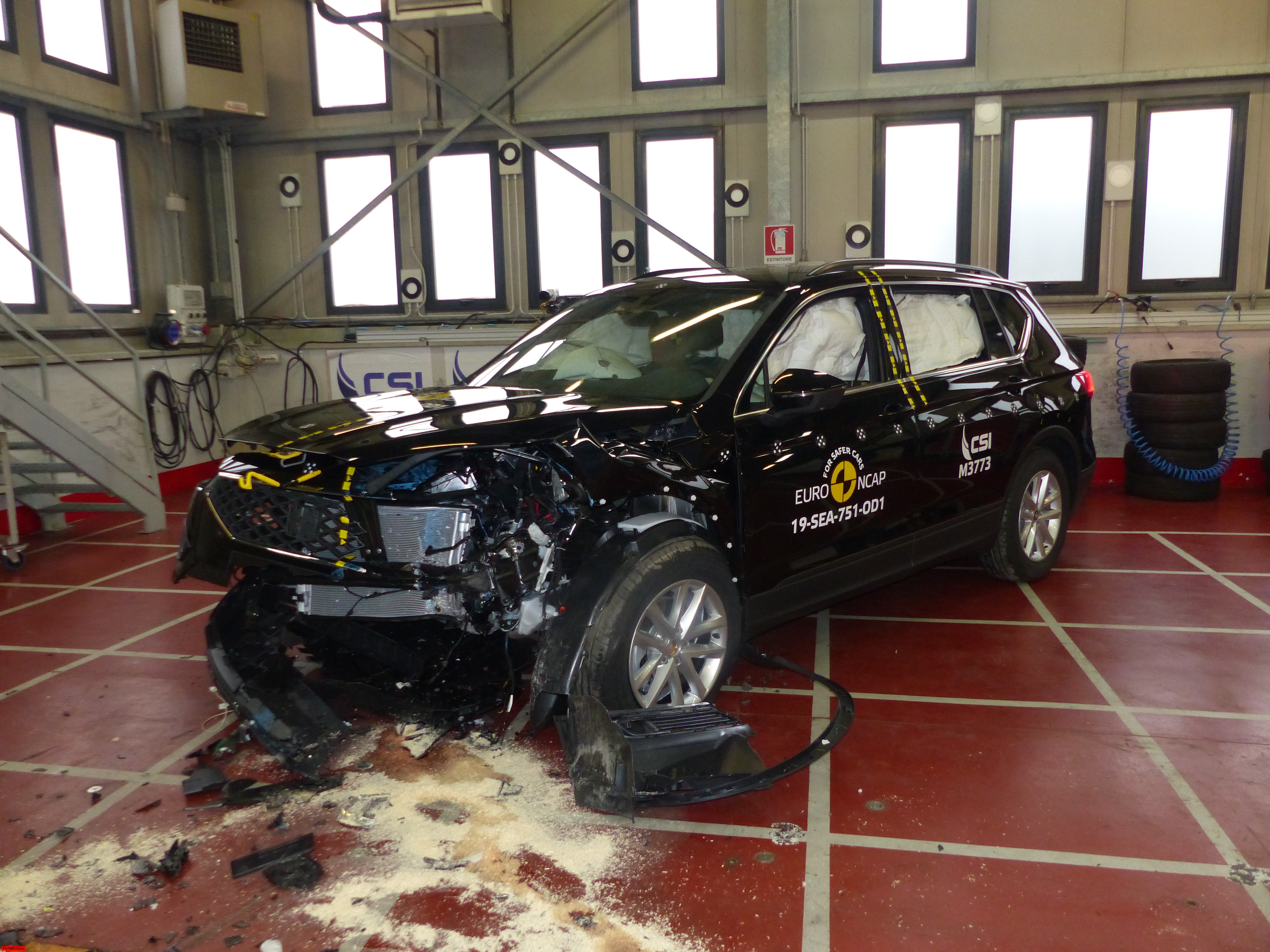
Final thoughts
Despite entering a competitive part of the market, the Tarraco should have what it takes to survive as it has a lot to offer such as strong levels of space and practicality, a good amount of kit, a good amount of style, and a decent choice of powertrains. Ok, so it’s not quite as comfortable as a 5008 or a CR-V, and the interior is a bit boring, but these are not major niggles.
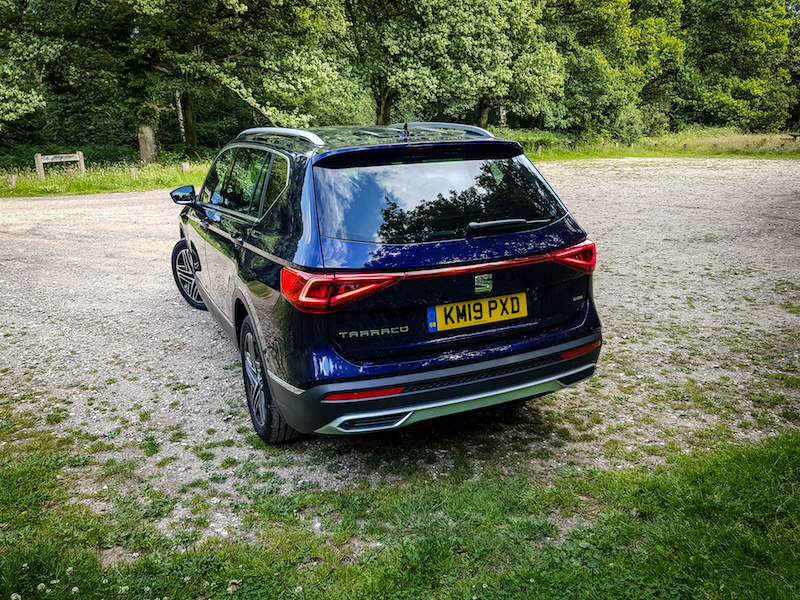
There’s a fair amount to like about the Tarraco, but it faces tough rivals so it will certainly have its work cut out. However, if you’re looking for a seven seater that’s easy on the eye, practical, safe and engaging to drive, the Tarraco definitely deserves your attention.
Car Obsession Rating:  (4.5 / 5)
(4.5 / 5)
Pros:
- Stylish exterior
- Good level of kit
- Comfortable
- Refined
- Very practical
- Spacious
- Fantastic infotainment
Cons:
- Interior is a bit bland
- Not the most frugal in its class
- Not the most comfortable in it class
Rivals
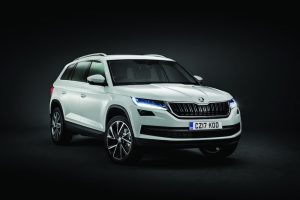 Skoda Kodiaq
Skoda Kodiaq
The Kodiaq may be built on the same platform as the Tarraco as well as being part of the same automotive group, but that doesn’t stop it being the Spanish car’s biggest rival. It has a cheaper starting price and has a bigger boot, but it’s not quite as good looking if you ask me, and it’s not quite as good value.
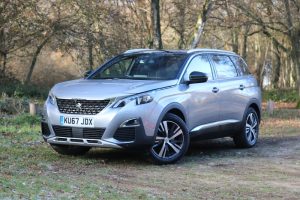 Peugeot 5008
Peugeot 5008
Peugeot had a stroke of genius when it decided to convert its 5008 MPV in to an SUV, as not only has this model remained current, but it’s also been a strong seller for the French brand. It offers a good amount of space and style, plus it’s got high levels of comfort to go with it. However, the Tarraco is the more engaging car to drive, though.
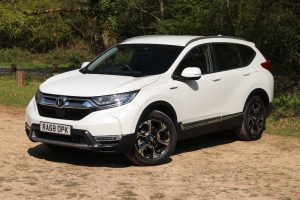 Honda CR-V
Honda CR-V
It may have an infotainment system from the last decade and questionable fake wood trim, but the CR-V has been a mainstay in the SUV world, with good reason. That’s because it’s very practical, spacious, offers a good amount of kit, and has plenty of safety features. The CR-V also has a loyal fanbase, which is what has helped it stick around for so long.

